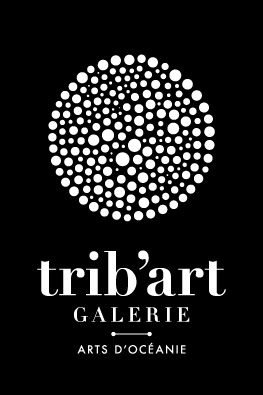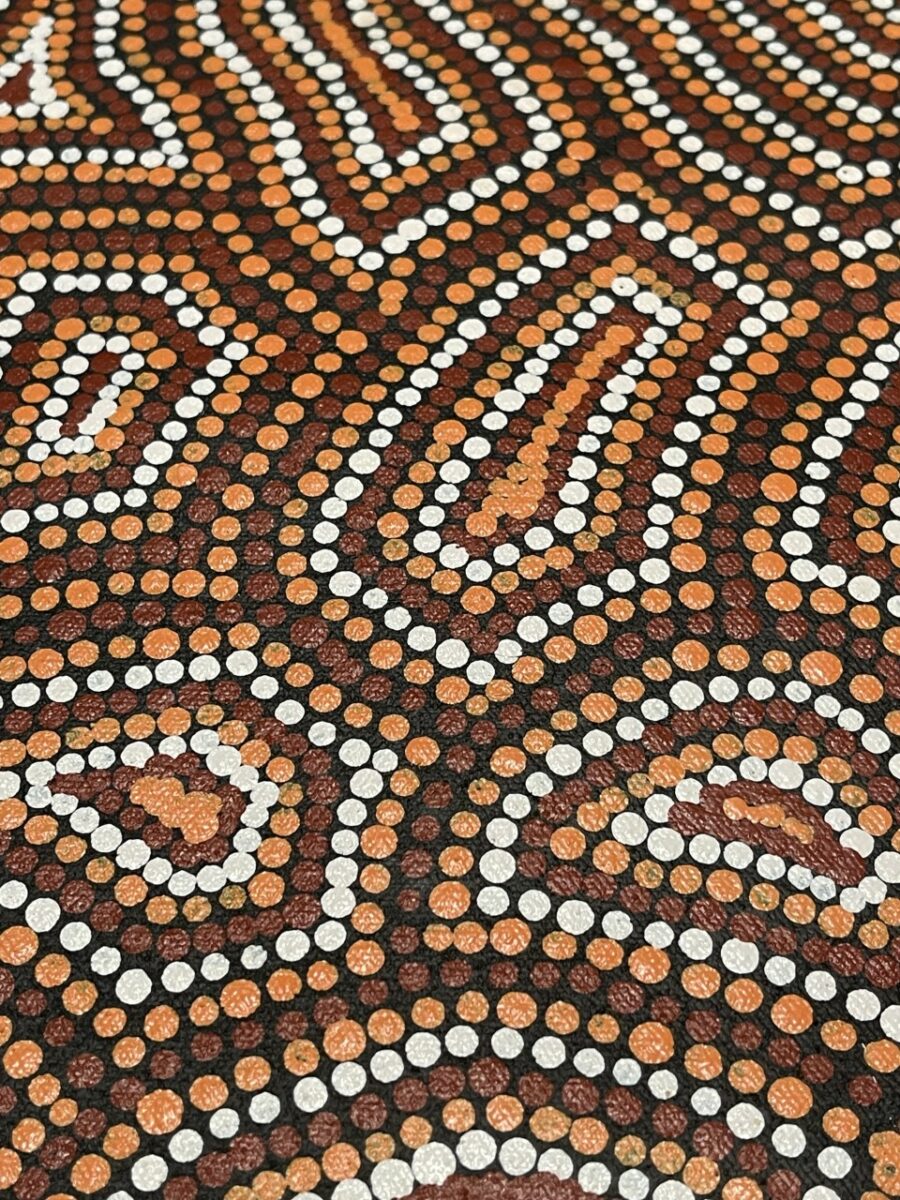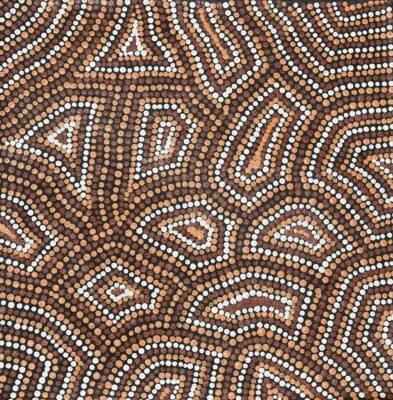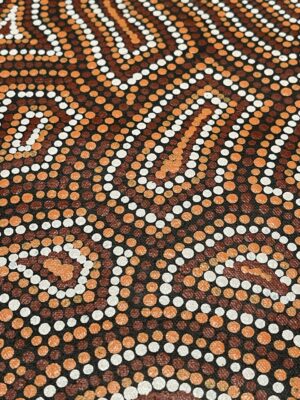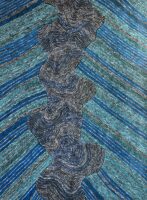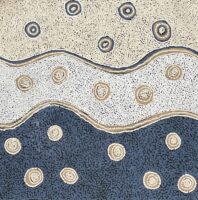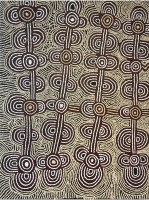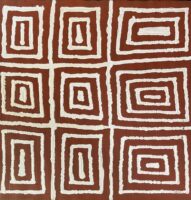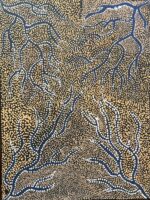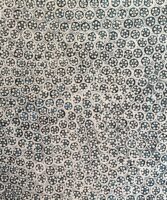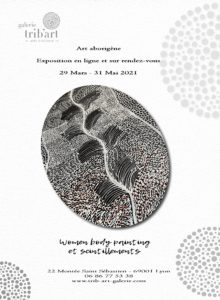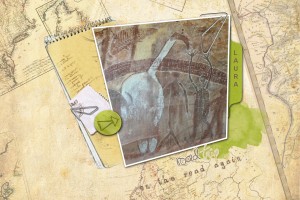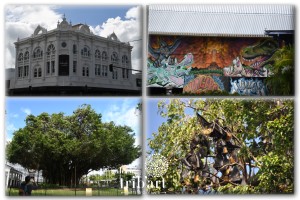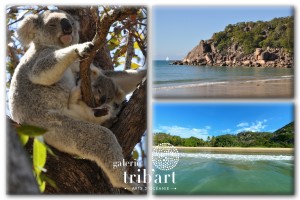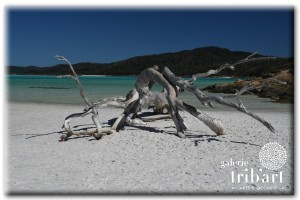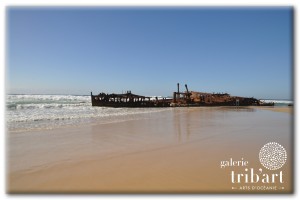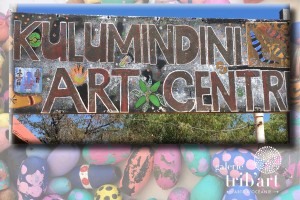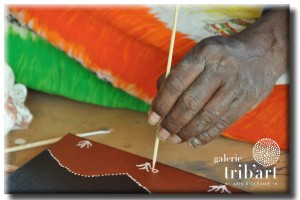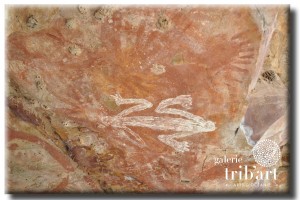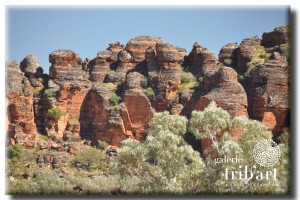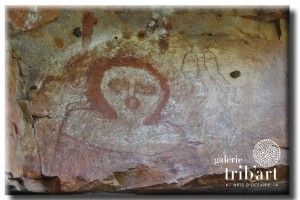Acrylique sur toile
30 x 30 cm
2022
Prix :
Vendu
Roxane Pirlinyarnu
Ngapa Pirlinyarnu
Le site décrit sur cette œuvre correspond à Pirlinyarnu – Mont Farewell à environ 170 km à l’ouest de Yuendumu dans les territoires du nord. Les gardiens de ce temps du rêve sont les femmes Nangala/Nampijinpa et les hommes Jangala/Jampijinpa.
Deux hommes faiseurs de pluie chantère jusqu’à provoquer un immense orage qui entra en collision avec une autre tempête qui venait de Wapurtali à Mirawarri. A « Kirrkalanji », un faucon brun transporta ces tempêtes au delà de Mirawarri.
Ce site existe actuellement et à chaque tombée de pluie (ce qui est rare) des centaines de canards du bush arrivent pour barboter dans ce lieu humide.
Peinture d’Australie – Art Aborigène
The site depicted in this painting is Pirlinyarnu (Mt. Farewell), about 165km west of Yuendumu in the Northern Territory. The « Kirda » (owners) for the water Dreaming site at Pirlinyarnu are Nangala/Nampijinpa women and Jangala/Jampijinpa men.
Two Jangala men, rainmaker, sang the rain, unleashing a giant storm that collided with another storm from Wapurtali at Marawarri. A « Kirrkarlanji » (brown falcon) carried the storm further west from Marawarri. The two storms travelled across the country from Karlipirnpa, a ceremonial site for the water Dreaming near Kintore that is owned by members of the Napaljarri/Japaljarriand Napanangka/Japanangka subsections. Along the way, the storms passed through Juntiparnta, a site that is owned by Jampijinpa men. The storm eventually beame too heayv for the falcon. It dropped the water at Pirlinyarnu, where it formed an enormous « maluri » (claypan). A soakage exists in this place today. Whenever it rains today, hundreds of « ngapangarlap » (bush ducks) still flock to Pirlinyarnu.
In contemporain Warlpiri paintings, traditional iconography is used to represent the Dreaming (Jukurrpa) associated sites, and other elements. In many paintings of this Dreaming, short dashes are often used to represent « mangkurdu » (cumululs and stratocumulus clouds) and longer, flowing lines represent « ngawarra » (flood waters) Small circles are used to depict « mulju » (soakages) and river beds.
